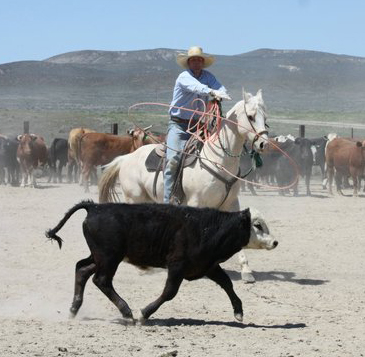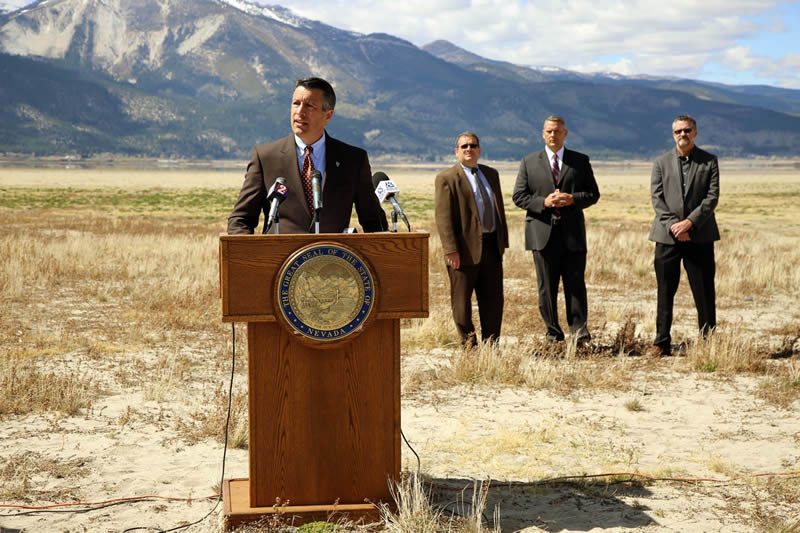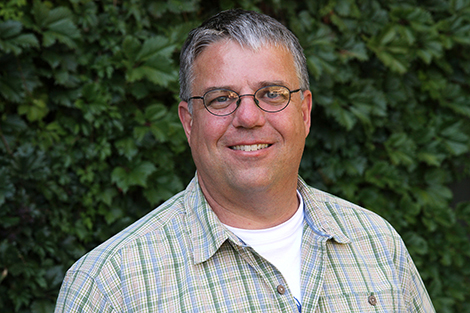By Jessie Schirrick and Brody Goucher Posted March 18, 2015
The grocery stores are running out of fresh produce, and every faucet in the state has run dry.
This summer, instead of going swimming, desert dwellers will have to burrow underground to cool down, and westerners will evacuate their homes and head east in search of water. Okay, so it hasn’t gotten that bad yet, but these are the kind of conditions the Western United States could be looking at if rainfall continues to decrease at the rate it has. California, the state that has been most affected by the drought, has just implemented very restrictive water conservation laws that go as far as banning restaurants from serving water to customers unless they specifically ask for it. The rest of the country will go down with them as California is responsible for growing half of U.S. fruits, nuts, and vegetables, not to mention several other commodities that contribute to the state’s $46.4 billion agricultural industry. These issues have led to several water rights battles between Western states, and especially between Las Vegas and several neighboring cities.
One reason the drought hasn’t improved is because of the severe lack of snow this winter. Only 62% of Nevada received its average amount of snowfall while regions like Carson (28%), Truckee River (18%), and Walker River (19%) are severely below their average amount of snowfall for this time of the year. Without the runoff water that the snow packs in the mountains give off, crops will have a poor season and prices at the supermarkets will keep going up. The areas most affected by the drought include Fallon, Lovelock, and Yerington. In these areas, crops aren’t the only thing that will suffer; cattle and wild horses as well as other wildlife will have a hard time finding water, especially if the region undergoes its usual breakout of wildfires.
Dr. Douglas Boyle, a professor at the University of Nevada, Reno, says that there is no need for immediate concern for everyday people in towns or cities, but that farmers are already suffering.
“The first year of the drought was not particularly damaging to agriculture, but now in our fourth year of drought, things are looking pretty bad. Farmers can’t rely on surface water for irrigation because there isn’t much water stored in reservoirs which is causing many farmers to use much smaller portions of their fields in order to conserve water,” said Boyle.
If the drought continues then prices will continue to soar in the supermarkets and eventually, farms won’t have enough water to keep growing crops, so everyone is wondering how long the drought will last and the severity of it. Unfortunately, the answers to those questions remain unknown.
“Weather forecasts are only accurate 8 to 10 days in advance and while people have their predictions no one can predict exactly when the drought will end. One possible long-term effect of the drought would be something like cattle owners having to sell off their cattle to states farther east, which will cause many ranchers to go out of business and force them to explore other options,” said Boyle.
Farmers are facing huge challenges and there still remain many Nevadans who are completely oblivious to the crisis in their own backyard.
“While farmers and ranchers are feeling the impacts of the drought many everyday people in cities like Las Vegas, Reno, and even small towns like Winnemucca don’t even realize that the drought is happening. Cities are required to have a certain amount of year’s worth of water stored up and Reno claims it has an eight-year supply of water. The cities and towns that depend on groundwater are not experiencing any negative effects and are actually doing quite well, so it just depends on where you are at and how you use your water whether or not you notice the effects of the drought,” explained Boyle.
While Boyle accurately states that there are several locals who are unaffected by the drought there are also several that are.
“One way people will be affected in towns and cities is if they have a taste for locally grown fruits and vegetables then they will have to decide if they want to spend more for locally grown produce or if they want to save their money and buy imported produce but sacrifice knowing where their food is made,” said Boyle
Boyle makes it clear that farmers and ranchers are taking the heat, and local rancher Guy Tipton can definitely vouch for that.
“My family and I own a ranch just out of town where we have meadow ground. We mostly run cows out on the desert around town and then we are in the process of growing some alfalfa but we aren’t done yet,” said Tipton.

Tipton explained how the drought has affected his irrigation methods.
“We use a well to irrigate our alfalfa; well usage hasn’t been affected by the drought yet, but the state is beginning to monitor that more, and in the future, there’s a chance that wells will be curtailed like rivers. As of now, I get my full water right no matter what,” said Tipton.
A water right is a legal entitlement authorizing water to be diverted from a specified source and put to beneficial, non-wasteful use according to waterboards.gov. Tipton explained that his water once came from the Humboldt River but this has changed because of the drought.
“In ‘12, ‘13, and ‘14 we didn’t get any water from the river, we’ve gotten a little bit but we haven’t gotten enough to irrigate since ‘11 and it actually flooded on its own that year. When there’s a drought, the oldest rights come into priority so the people who own those accumulate water. If there’s a drought and we don’t get water from the river we have to buy feed that we normally would get from the river water for free. This can be very costly. We do however have a couple of different insurance deals that cover the cost of buying supplemental feed in the case of a drought, but it’s still very tough for everybody and all you can do is hang in there,” said Tipton.
Tipton has had to make several budget cuts because of this lack of water.
“We’ve had to cut down on the number of cattle because we just couldn’t feed them with what we had. We run the remaining cows on the desert, public lands, BLM [Bureau of Land Management]. The cows are in pretty good shape when they come home to the meadows so they get by when they’re inside until we can turn them back out again,” said Tipton.
Fortunately, because of experience, Tipton has grown accustomed to droughts and other struggles of desert ranching.
“It’s tough but we have droughts an awful lot in this area so we’ve learned how to get by on bad years. According to my parents, there hasn’t been a drought this bad since the 50’s. The current drought technically began in 2000, with a couple of non-drought years in ‘05 and ‘06, but I’d say ‘12 was probably the worst year, and ‘13 and ‘14 were still drought years but not as severe as ‘12,” said Tipton.
The amount of rainfall is an obvious indicator of whether or not an area is experiencing a drought, but there are other factors.
“The government gauges a drought by snowpack, rainfall, and soil moisture, but rainfall is one of the biggest gauges of a drought,” said Tipton.
In such dire consequences, ranchers are forced to take precautions.
“We have to look ahead and ensure that we have some extra hay stockpiled on hand. If the drought worsens or persists, there’s a chance we might not be able to renew our BLM grazing permit, so then we’d have to bring them to our meadows which don’t yield any feed, so we’d have to figure out how to buy hay at a time when it’s not in season. If it gets a lot worse we would have to find pasture elsewhere, which is unlikely because the drought is so widespread, so we would end up having to sell a majority of our cows. If that happened we would hold onto that money and use it to try to keep and feed a core group of cows and then we would have to slowly start building our numbers back up as the weather permitted. So we have to plan long term but for the most part, we take it day-to-day,” said Tipton.
It’s a good thing Tipton has made preparations because it doesn’t look like conditions are going to improve very much this year.
“Right now it looks like the drought is going to be of the same severity this year, but the river’s probably going to flow worse than last year because the snowpack is lower, about as low as it was in ’12. The range land around here is in better shape than it was in ‘12 so it will be about the same as last year, which is by no means good,” said Tipton.
If the drought isn’t enough, ranchers are up against several different forces that make doing their job more difficult.
“The BLM and Forest Service have these restrictions and regulations that work against us and they don’t have the scientific proof to back it up, these rules are in place for political reasons or because they say that what we do harms the environment. There are already a lot of issues we face and the drought magnifies them that much more,” said Tipton.
However, recent actions show the state government is concerned about current conditions. On April 8, Governor Brian Sandoval issued an Executive Order establishing the Nevada Drought Forum.
“Drought affects all Nevadans and we must work together to ensure a path to sustainability for future generations,” said Governor Sandoval in a press release. “The Nevada Drought Forum will bring together some of the best minds in the water science, conservation, government, and industry sectors to ensure that Nevada’s path forward is clear. The Forum will provide an opportunity for all Nevadans – urban and rural, north and south – to come together to help address this most critical challenge.”






